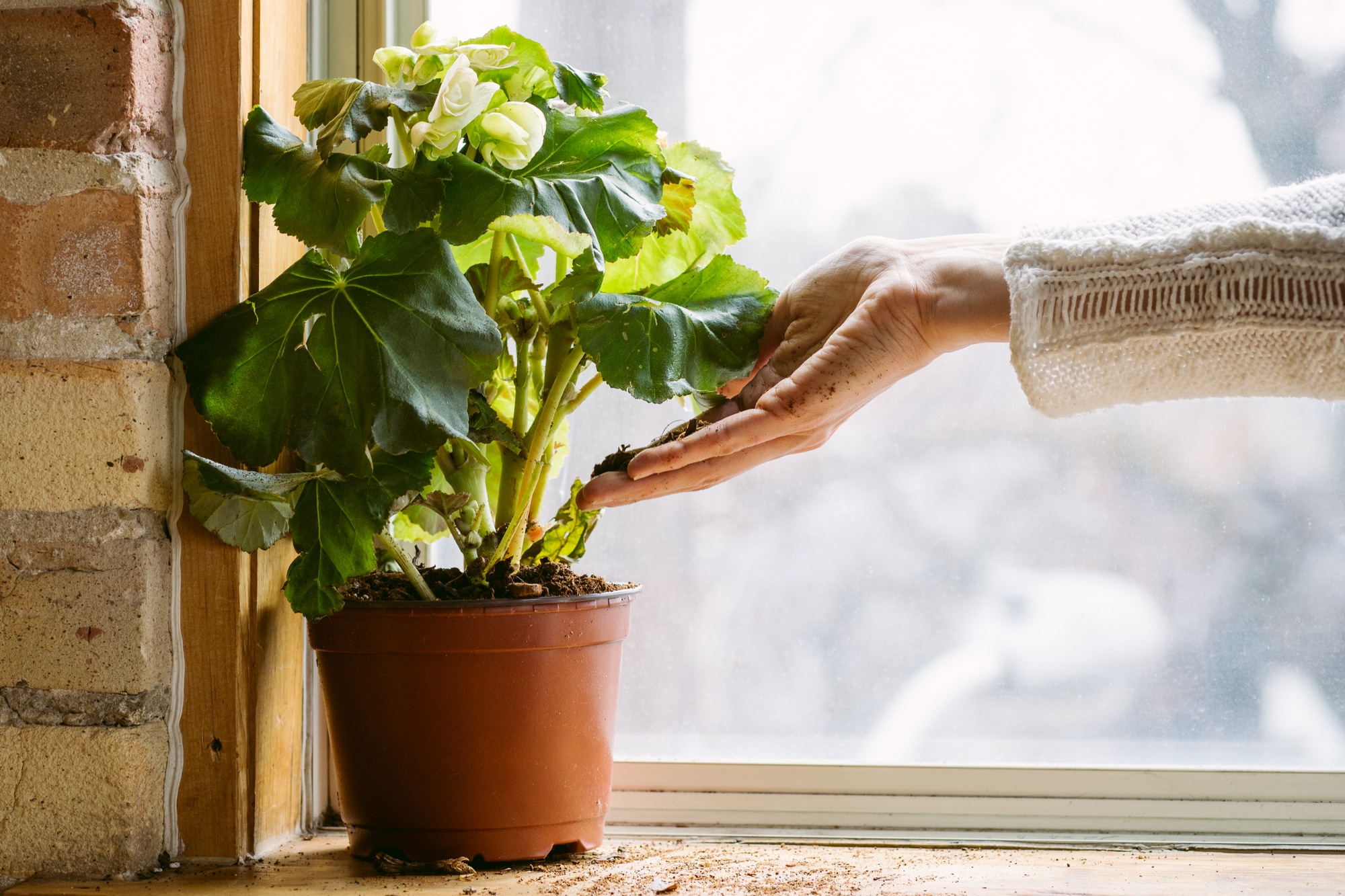Composting Article Part 1: A Beginner’s Guide to Composting is a great way to make a positive impact on your garden and the environment and, it’s easier than most people think. Depending on your lifestyle and how much space you have, you can approach composting in a number of ways.
Outdoor composting options
For an outdoor composting set up, you can keep a compost pile or purchase a compost bin or tumbler from a local home improvement retailer a popular choice among composting newbies. If you create a backyard pile, you’ll want to follow a few guidelines from the U.S. Environmental Protection Agency (EPA).
Select a dry, shady spot for your pile near a source of water
Add both brown and green materials to the pile as you use them (browns are items like leaves, straw, paper or dryer lint; greens are wet or recently growing items like coffee grounds, fruit or veggie scraps)
Chop or shred large pieces of scraps into small pieces
Moisten dry materials as they’re added to the pile
Mix grass clippings and green waste into the pile, but bury fruits and vegetables a little deeper
Next, decide on hot or cold composting. Fine Gardening suggests the hot composting method if you want faster results and are willing to put in more time. This method requires dampness and a ratio of two parts brown items (carbon) to one part green items (nitrogen). Cold composting, on the other hand, can take up to two years to see results, but requires minimal planning and attention.
To ensure the highest quality compost, “turn” your pile every 3-7 days: insert a shovel into the pile and literally turn it over. Turning compost adds oxygen and aids microbe development, speeding up the decomposition process.
Indoor Composting
Apartment or city living often doesn’t allow space for outdoor composting, but you can still compost inside your home. Indoor composting bins can be much smaller than their outdoor counterparts; you might already have a bucket or plastic bin with a lid that will work as a composting bin. Drill or punch holes in the bottom and around the rim, and set on a newspaper-covered tray. Add a layer of soil about ¼ of the way into your container, plus a layer of shredded newspaper. Then you’re ready to add waste.
You’ll want to be careful with waste indoors, as fragrant scraps or wet fruits and vegetables can cause odors and soggy compost. Items like hair and dryer lint are better suited for outdoor composting, as the decomposition cycle is longer.
You can use your Vitamix machine to quickly break down compostable materials with a few pulses, in order to speed up the composting process.
Similar to outdoor composting, you’ll want to “turn” your compost about once a week to increase the microbial action. Use a hand shovel or roll your bin back and forth to mix the content. When you’re done each time, add a thin layer of soil.
The next level in composting is adding worms to your operation. This is what the experts call “vermiculture” or “vermicomposting.”Earthworms are amazing creatures in gardens, and they are a positive force in both indoor and outdoor composting.
Composting and Vitamix
Some diets may generate compost-worthy items at a rapid pace. Many Vitamix recipes—like smoothies, juices, dips, soups—are based on whole foods. To minimize the impact of waste generated by whole-food diets, Vitamix is now partnering with Food Cycle Science to offer the FoodCycler FC-30™ through vitamix.com.
The FoodCycler is a countertop appliance that makes indoor composting a breeze. A great entry into composting, the FoodCycler is odorless, easy to use and easy to clean. When you make a Red Salsa, pop your scraps right into the FoodCycler bucket. It seals and keeps out odors until you’re ready to compost. When the bucket is full, simply press a button; you’ll have compostable material in as little as three hours.
You’ve composted your waste. Now what?
Composting times vary widely, depending on your method, ranging from three hours with the FoodCycler, to two years for a large outdoor cold compost pile.
It’s well known that compost is a favorite tool for gardeners and can be used to fertilize garden beds and plants. Even if you don’t have outdoor space for a garden, keep the compost! You can use it on indoor houseplants or donate it to a school or community garden. And make sure to check and see if your city has a curbside compost collection program.
Check out the FoodCycler and Vitamix whole-food recipes to start your food waste reduction journey. Whichever composting method you decide to pursue, you’re taking a step in the right direction to reduce waste, and minimize your carbon footprint.
